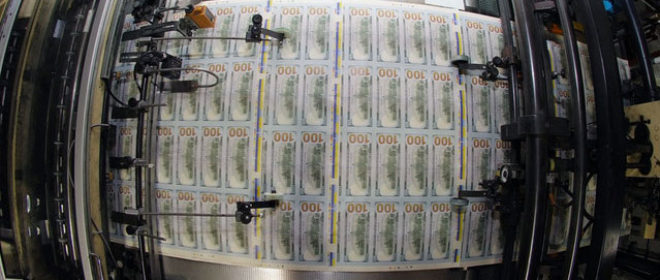
Intaglio (/ɪnˈtæli.oʊ/ in-TAL-ee-oh; Italian: [inˈtaʎʎo]) is the family of printing and printmaking techniques in which the image is incised into a surface and the incised line or sunken area holds the ink. It is the direct opposite of a relief print.
Our twins like money, so recently we toured the Bureau of Engraving and Printing in Ft. Worth, Texas, which is one of two places in the US where US paper currency is made (Washington, DC is the other).
One of BEP’s taglines is “YES, the buck starts here!”
It was a self-guided tour, complete with personal listening wands, and was a destination of great interest due to a counterfeit $20 we obliviously ended up with after a stop at a shady convenience store earlier this year. We were mesmerized by the intricate process involved in making money and after the tour we unanimously agreed with one of the engravers who said that every dollar or “note” truly is a masterpiece.
Throughout the ten viewing spots along the tour we saw the unique cotton/linen blend paper made exclusively by the Crane Paper Company, extreme security measures to prevent counterfeiting (note to self, always check for the watermarks and ribbon), and highly specialized craftsmen, machines, and computers. We learned about the different images that have appeared on various bills throughout history (remember that ominous eye above the pyramid?) and saw millions of dollars being bundled and made ready for delivery to a Federal Reserve Bank. All in less than 2 hours, including a stop at the gift shop where the twins paid hard earned cash for fidget spinners designed like a $100.
The tour of the BEP left two impressions are me – what skill feels like and how intaglio is like deliberate teaching.
Each of the artists and employees who spoke about their work had an obvious sense of awe about their skill. It was inspirational to hear them talk about their contribution to the process of making US paper currency, which one of them called the highest level of work for an engraver. They were loyal to America but it was more than that, they were proud that they were part of this distinguished, highly accurate (98% of the notes make it to usable bills) national process. They are extraordinarily good, and they knew it, but were refreshingly humble, even grateful, about it. That must be what true skill feels like. I was reminded of what Deci and Ryan (2002) have offered regarded efficacy and self-determination, specifically that competence, autonomy, and psychological relatedness must be present for there to be true intrinsic motivation.
The second impression was the intaglio technique and how it is like deliberate teaching. Ericsson (2016) suggests that practice that is purposeful can result in expertise. I saw evidence of this type of practice at the BEP. The precision, the hours of intense etching of the image that was determined before the first line is embedded in the metal plate. The hours of nickel “growing” on the sheet, then the rough edges chipped off with a scalpel-type tool. The intense pressure that allows the ink to be applied to the paper. Each step being so intentional and so permanent. There are multiple stops during the intaglio process there the notes that are “under construction” are compared to perfect notes at that stage to insure they are on the right track.
Deliberate teaching is much like this process. Teachers who are clear on what the goals are for each lesson, allow focused practice, and provide specific feedback that students respond to will create learning spaces where students can master content and move forward. This type of teaching does not just happen -what Ericsson calls “innate talent”- instead it is learned. Marzano, Frontier, & Livingston, (2011) describe a framework that leads to this type of deliberate practice:
- A well-articulated knowledge base for teaching
- Opportunities for teachers to practice specific strategies or behaviors and to receive feedback
- Opportunities for teachers to observe and discuss expertise
- Clear criteria for success and help constructing professional growth and development plans
- Recognition of the different stages of development progressing toward expertise
Similarly, Deans for Impact (2016) align these elements of deliberate practice to teacher preparation and suggest similar components in preparing effective novice teachers.
After touring the BEP I agree “money doesn’t grow on trees” and after 20 years as a teacher and professor I know that good teachers are not just born. The process involved in improving as a teacher is no quick buck. It requires, like intaglio, commitment, time, mentors, and deliberate practice. While we probably won’t make millions like the BEP each day, our investment in students is definitely worth it!
